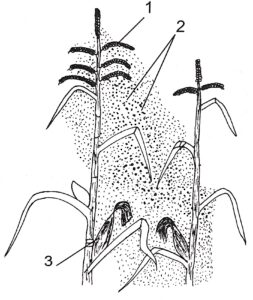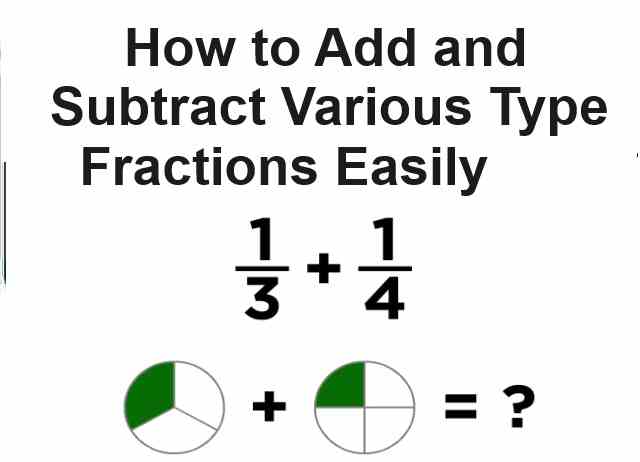Pollination and Fertilisation Goyal Brother Solutions ICSE Class-9 Biology Ch-5. We Provide Solutions of Exercise-5 Pollination and Fertilisation Goyal Brother Prakashan ICSE Class-9 Ch-5. The solution contain All Type exercise question such as name the following, odd one, MCQs and figure based. Visit official Website CISCE for detail information about ICSE Board Class-9.
Ch-5 Pollination and Fertilisation Goyal Brother Solutions ICSE Class-9 Biology
| Board | ICSE |
| Publications | Goyal Brother Prakashan |
| Subject | Biology |
| Class | 9th |
| Writer | Dr. S.K. Aggarwal |
| Chapter-5 | Pollination and Fertilisation |
| Topics | Solutions of Exercises-5 |
| Edition | for 2022-2023 Academic Session |
Ch-5 Pollination and Fertilisation Goyal Brother Prakashan ICSE Class-9 Biology Solutions
(Page-55-56)
Questions 1. Fill in the blanks with appropriate word given in the brackets:
(i) Cross pollination takes place in all …Monoecious.... plants. (monoecious /dioecious)
(ii) Bougainvillea flowers are pollinated by . insects (wind/insects/water)
(iii) Double fertilisation is common in angiosperms (gymnosperms/angiosperms)
(iv) Salvia is a/ an ...entomophilous.…… flower (entomophilous/ornithophiles/ hydrophilous)
(v) After fertilisation, the …ovule…. becomes the fruit and the becomes the seed. (ovule/ ovary/ integuments)
Questions 2. Mention whether the following statements are True (T) or False (F):
(i) Fertilisation is fusion of anther and stigma. T
(ii) Cross pollination always occurs in unisexual flowers. T
(iii) In maize the pollination is brought about by insects. F
(iv) Anemophilous flowers are large and bright. F
(v) Vallisneria flowers are pollinated by wind. F
Questions 3. Given below are sets of five terms each. Rewrite the terms in correct order in a logical sequence beginning with the term that is underlined:
(i) Intine, Pollen tube, Exine, Tube nucleus, Male gametes.
Ans: Exine Intine,Pollen tube Tube nucleus, Male gametes.
(ii) Integuments, Funiculus, Egg. Nucellus, Embryo sac.
Ans: Funiculus, Egg Embryo sac. Nucellus Integuments
(iii) Stigma, Pollen tube, Pollen grains, Female gamete, Male gamete
Ans: Pollen grains Stigma Pollen tube Male gamete Female gamete
Questions 4. Choose the correct answer from the options given below:
(i) When the anthers and the stigma of a bisexual flower mature at the same time, it is called
(a) Cleistogamy
(b) Protogyny
(c) Homogamy
Ans: (c) Homogamy
(ii) When the stamens mature earlier than the gynoecium of the same flower, it is called
(a) Protogyny
(b) Protandry
(c) Homogamy
Ans: (a) Protogyny
(iii) A hood covering the stigma acts as a barrier in
(a) Pansy flowers
(b) Hibiscus flowers
(c) Mustard flowers
Ans (b) Hibiscus flowers
(iv) The flowers large, brightly coloured and attractive are generally
(a) Entomophily
(b) Anemophily
(c) Hydrophily
Ans : (a) Entomophily
Questions 5. Define pollination. how does it differ form fertilisation?
Answer : Pollination is the act of transferring pollen grains from the male anther of a flower to the female stigma.
The major difference between pollination and fertilization is that pollination pollens transfer from one flower to another. Whereas, in fertilization takes place after pollination is transferred successfully.
Questions 6. Give two advantages and two disadvantages each of self and cross pollination.
Answer :
Advantages of self-pollination:
- The race’s purity is preserved.
- Pollen grains do not go to waste.
- Pollination is not dependent on external causes or pollinating agents.
Disadvantages of self-pollination:
- The seeds are smaller in number.
- New plant varieties cannot be created.
Advantages of cross-pollination:
-
- New varieties are created as a result of cross-pollination.
- Seeds are produced in more significant quantities and are more viable.
Questions 7. State four differences between insect and wind pollinated flowers.
Answer :
| Wind pollinated flowers | Insect pollinated flowers |
| The pollinating agent is wind. | The pollinating agents are insect. |
| These flowers are unisexual, dull coloured, and without scent and nectar. | These flowers are brightly coloured, scented and produce a lot of nectar. |
| Pollen grains are small, light, and produced in large number so a lot of wastage occur. | Pollen grains are large, sticky, spiny and are produced in small numbers so no wastage occur. |
| Stigma is feathery or sticky and hangs out of petals. Stamens are long and visible out of petals. | Stigma is small and is situated deep inside the petals.Stamens may be small and hidden inside petals. |
Questions 8. Give two examples each of wind, water and insect pollinated flowers.
Answer : Examples of wind- pollinated flowers -Maize and Pine
Examples of water-pollinated flowers-Vallisneria and Hydrilla.
Examples of insect-pollinated flowers- Dahlia and Sweet pea.
Questions 9. Normally sepals fall after fertilisation. Name two fruits in which the sepals persist.
Answer : Sepals form the outermost whorl of the flower known as calyx. They are generally green in colour. Normally sepals fall off after fertilisation. Plants, where sepals remain attached to the fruit are tomatoes, strawberries, raspberries, brinjal, etc.
Questions 10. In brief explain the method of pollination in a flower.
Answer : Pollination is a method where pollen grains are picked from an anther, which is the male part of a flower and transferred to the flower’s female part called the stigma. To make the pollination work successfully, the pollen grains must be transferred from the same species of flower.
Questions 11. State any three structural features found in flowers which favour cross pollination.
Answer : The three contrivances in flowers which favour cross-pollination. <br> (i) Unisexuality (ii) Dichogamy (iii) Self-sterility.
Questions 12. Name the floral parts which develop into following structures
(i) seed —Ovule
(ii) pericarp–ovary wall
(iii) seed coat—The outer surface of the ovule
(iv) fruit.—Ovary
Questions 13. What is the function of pollen tube? Trace its path from stigma to the female gamete by means of a diagram.
Answer : The pollen tube of most seed plants acts as a conduit to transport sperm cells from the pollen grain, either from the stigma (in flowering plants or angiosperms) to the ovules at the base of the pistil, or directly through ovule tissue in some gymnosperms (conifers and gnetophytes).
Questions 14. Explain the following terms:
(i) Anemophilous flower
(ii) Zygote
(iii) Double fertilisation
(iv) Gametes
Answer :
(i) Anemophily or wind pollination is pollination carried out with the help of the wind. This pollination is called anemophilous pollination. The flowers which carry out such type of pollination are wind pollinating flowers. They are small, lightly coloured and do not produce scent or nectar.
(ii) A zygote, also known as a fertilized ovum or fertilized egg, is the union of a sperm cell and an egg cell. The zygote begins as a single cell but divides rapidly in the days following fertilization. The zygote’s single cell contains all of the 46 necessary chromosomes, getting 23 from the sperm and 23 from the egg.
(iii) Double fertilization is a complex fertilization mechanism of flowering plants (angiosperms).
(iv) Gametes are an organism’s reproductive cells. They are also referred to as sex cells. Female gametes are called ova or egg cells, and male gametes are called sperm. Gametes are haploid cells, and each cell carries only one copy of each chromosome.
Questions 15. Describe the events taking place between pollination and fertilisation.
Answer : Pollination is the transfer of pollen grains from an anther to a stigma. Pollen can be transferred by an animal or by the wind. Fertilisation takes place inside the ovary when the nucleus of pollen grain fuses with the nucleus of an ovule to produce a zygote.
Questions 16. Draw a labelled diagram of an ovule as seen in a longitudinal section.
Answer :

Questions 17. Describe the post-fertilisation changes taking place in an ovary.
Answer : After fertilization occurs, each ovule develops into a seed. Each seed contains a tiny, undeveloped plant called an embryo. The ovary surrounding the ovules develops into a fruit that contains one or more seeds.
Questions 18. Mention characteristics of entomophilous and anemophilous flowers.
Answer : Large size flower, brightly coloured, huge quantity of Nectar and directional pollination is characteristics of entomophilous flower. Pollination taking place by wind external means of agency is known as Anemophily and pollination taken place by insect external means of agency is known as entomophily.
Questions 19. Observe the given figure and answer the following questions:

(i) What is shown in the figure?
(ii) Label the parts marked 1, 2 and 3.
(iii) Name a plant which shows this phenomenon.
Answer :
(i) wind Pollination
(ii) 1, male inflorescence 2 pollen grains and 3.female inflorescence
(iii) in maize
Questions 20. Distinguish between the following:
(i) Protandry and Protogyny
(ii) Self pollination and Cross pollination
(iii) Fruit and Ovary
(iv) Ovule and Seed.
Answer :
(i) The main difference between protandry and protogyny is that protandry is the changing of the sex of an organism from male to a female whereas protogyny is the changing of the sex of an organism from female to a male.
(ii) The process of transfer of pollen grains from anthers to the stigma of a flower, but when this process is between the flowers of the same plant then the term is called self-pollination. The process of transfer of pollen grains between the flowers of the different plants of the same species is called cross-pollination.
(iii) Fruits are the mature or ripened reproductive structures (ovary of a flower) formed by plants that enclose seeds and help with their dispersal. Fruits generally have fleshy outer material.
(iv) The ovule is the female gametophyte which after fertilization transforms into a seed. A seed on the other side a seed is an embryonic plant enclosed in a protection outer covering known as the seed coat. It is the product of the ripened ovule which occurs after fertilization.
Questions 21. Observe the given figure and answer the following questions:

(i) What is shown in the given figure?
(ii) Label the parts 1 to 6.
(iii) What is the fate of given structure after fertilisation?
Answer :
(i) L.S. Ovule showing embryo sac
(ii) 1. antipodal pole 2. polar nuclei 3. funiculus 4. nuclellus 5. embryo sac 6. synergids
(iii) seed
Questions 22. Observe the figure given below and answer the questions that follow:

(i) Label parts 1-4 shown in the figure.
(ii) By what method do you think the flower is being pollinated.
(ii) Explain the mechanism of pollination shown above.
Answer :
(i) 1. floating male flower 2. female flower 3. pedicel 4. fruit
(ii) water pollination
(iii) Pollination in Vallisneria is epihydriphilous. It is a type of hydrophily which occurs on the surface of water. The female flower have a very long pedicel, therefore it reaches the surface of water. Male flowers after breakage floats on the surface of water.
–: End of Pollination and Fertilisation Goyal Brother Solutions ICSE Class-9 Biology :–
Return to:- ICSE Biology for Class 9 Goyal Brothers Prakashan solutions
thanks




